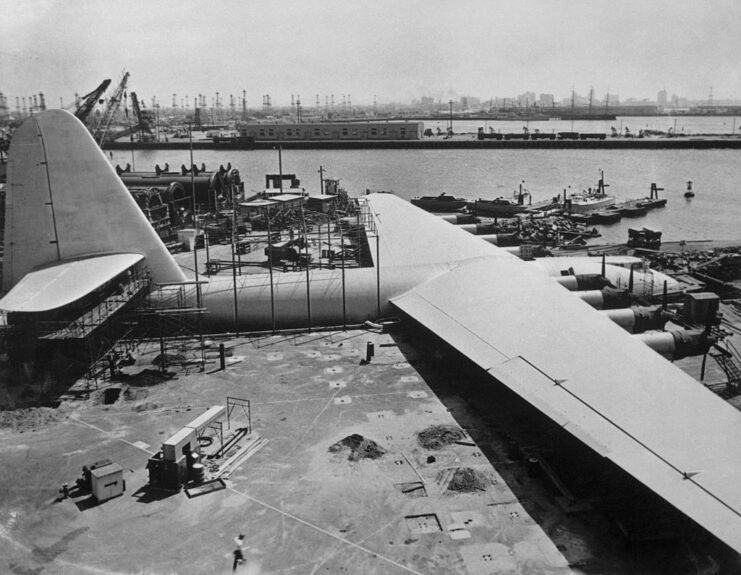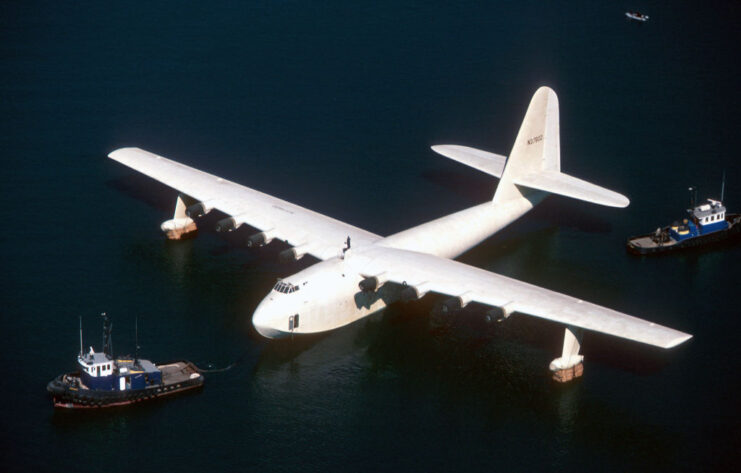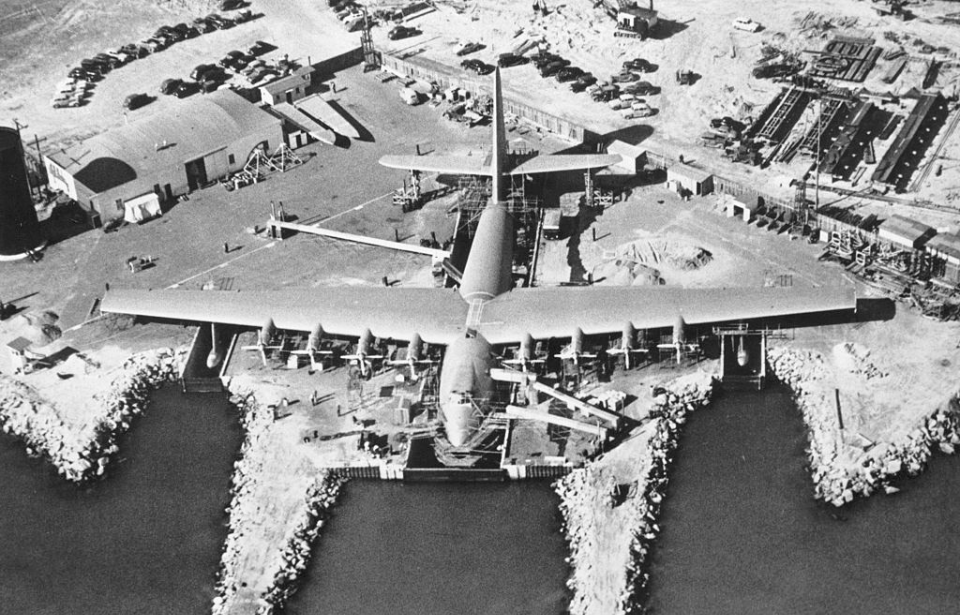Several experimental aircraft have been designed over the years, but few (if any) were as large and eye-catching as the Hughes H-4 Hercules. A flying boat prototype, this peculiar-looking aircraft was nearly 219 feet long and had a height of… Wait for it: almost 321 feet! To put that into perspective, the average football field, from goal line to goal line, is just 300 feet long!

The H-4 came from the mind of Henry J. Kaiser, who was known for building Liberty ships. It was the middle of the Second World War, and the United States needed to figure out a way to ship supplies to the United Kingdom without transiting the Atlantic, as it was teeming with German U-boats.
To produce the mammoth aircraft, Kaiser teamed up with Howard Hughes of Hughes Aircraft Company. The pair were given a contract to build the H-4, which they designed to carry either 150,000 pounds of cargo, two M4 Sherman tanks or 750 soldiers – basically, it needed to be big (and strong) enough to carry enormous loads.
As metal was needed for the war effort, the H-4 was constructed from laminated birch, earning it the nicknames “Spruce Goose” and the “Flying Lumberyard.” After a lengthy development process, which eventually saw Kaiser withdraw from the project, the aircraft was built, albeit after the war had come to a close.

